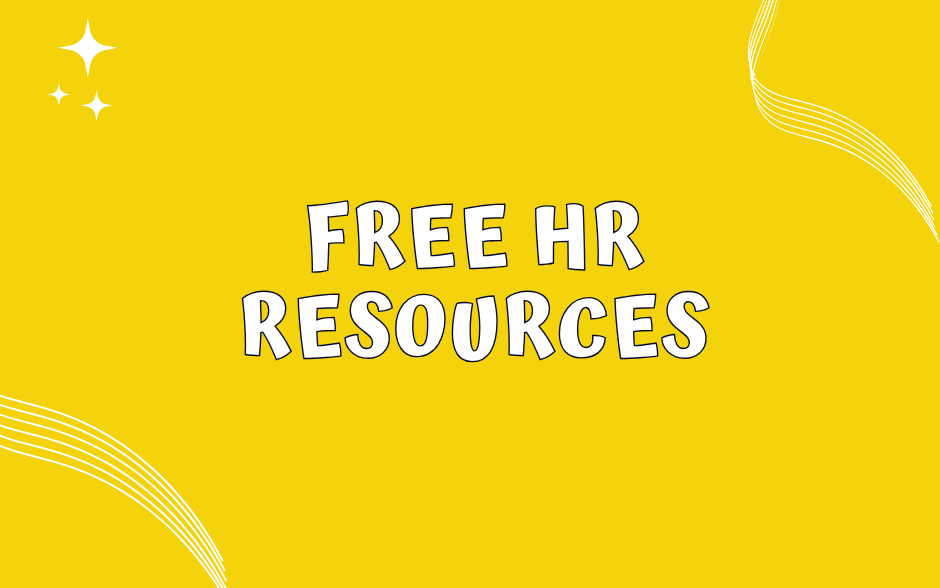What's Safeguarding compliance for Small Organisations?

If you’re the boss of an organisation that works with children or vulnerable adults, you’re in a very privileged position. But, as Spider Man once said: “With great power, comes great responsibility." 🕸🕷
Due to the amazing work you do, you’re often required to do things a little differently, to protect your staff and the people you come into contact with. This is called safeguarding. In other words, making sure that children and vulnerable adults are free from harm, abuse, or neglect.
During my time in HR, I’ve been lucky enough to work with several medium and small enterprises who work with children and vulnerable adults.
Drawing on that experience, I’ve pulled together a few HR hints and tips for organisations operating in this very rewarding sector 👇
WHY YOU’RE SUPER-SPECIAL 💜
There are many different types of organisations that offer services to children and vulnerable adults. For example:
- Social enterprises
- Charities
- Education providers
- Music Teachers
- Sports organisations
- Care or health settings
While it’s a super-special area to be working in, it does rely MAHOOSILVELY on formal HR processes and procedures that facilitate doing the right thing while promoting safeguarding measures.
Without these, the way you do things will be inconsistent, and you could be putting your staff and learners/students/customers at risk.
And what’s more, if you’re the guy or gal in charge, you could end up with a complaint on your hands. Or worse still, being sued 😱
HIRING IN YOUR SECTOR 🕵
If you’re looking to hire staff for your organisation, there’s a few things you need to make sure you’re squeaky clean on…
1. Nail your hiring strategy
Don’t rush into hiring somebody without pulling together your hiring strategy first. This is a mistake that many organisations make – and it simply results in delaying the recruitment process and compromising on who you really want.
To help you along with this, download my FREE HIRING STRATEGY WORKBOOK
2. Job ads that attract star talent
Be super-specific about what the advertised role entails and who you’re looking for. Without being discriminatory of course! This is so applicants are crystal clear what they’re applying for.
It’s also worth using this opportunity to spell out what background checks will be required – to make doubly sure the candidate is right for the advertised role.
3. Interview like a pro
Ask questions that are related to safeguarding practices. Invite them to tell you what they’d do in real-life situations that often occur in your organisation.
4. Do your DBS checks (Disclosure and Barring Services)
Make sure you’re doing DBS checks on your prospective employees and that candidates know this is a condition of employment.
It’s worth remembering that there are different levels of DBS checks you can do. However, the role you’re recruiting for, must be eligible for the type of DBS check you’re doing. The government has an eligibility tool you can use to find out which DBS level is right for the vacancy you’re about to fill.
5. Check out references and qualifications
Be super-vigilant when it comes to checking the validity of references and qualifications. It’s also worth picking up the phone and speaking to past employers.
I’ve seen so many employers skip this step. Simply because they’ve ‘hit it off’ with the candidate in an interview and then feel it’s unnecessary – when it’s totally not!
PROTECT EVERYONE WITH GOOD HR POLICIES
If you work with children or vulnerable adults, it’s essential you have HR policies in place.
A safeguarding policy for example, should describe how you do things in your organisation, so everybody does them in a consistent way. It also demonstrates that you’re an employer that takes your responsibilities seriously.
Ideally, your safeguarding policy should explain:
✔ How seriously you take safeguarding
✔ What you expect from your employees
✔ How to report concerns like abuse or neglect
✔ How you handle complaints from service users
✔ The processes for adhering to GDPR compliance
This policy will help to make sure that everybody on your watch is protected from abuse.
Other policies, including a Grievance Policy, a Code of Conduct Policy, or a Capability Policy – all help to spell out what you expect from your employees, and what they can expect from you.
And remember, HR policies shouldn’t be kept in a bottom drawer somewhere, they should be visible for all employees to see and refer back to.
💡 Mandy’s tip
For just £19.97, you can download my SAFEGUARDING POLICES that are 100% customisable to suit your organisation. They’re written in an easy-to-understand way, so there’s absolutely no room for doubt. And what’s more, if the law changes, I’ll send you an updated version too 👌
START AS YOU MEAN TO GO ON
When you hire a new recruit, make sure you give them top-notch induction.
This is even more important when you’re working with children and vulnerable adults – where processes need to be understood and followed to the absolute letter.
It’s also worth helping your new hire to understand the culture of your organisation. A place where you respect and follow safeguarding rules and strive to always comply to processes and procedures.
In terms of planning your induction, you may like to get some tips from a previous blog I wrote called: I'VE HIRED MY FIRST EMPLOYEE! HOW DO I MAKE SURE THEY GET A SUPER-DUPER INDUCTION?
With your existing staff, you should be continually identifying any gaps in knowhow through regular 1-2-1 sessions. And as industry policies and practices change, make sure you’re keeping your staff updated on what they need to be doing differently.






